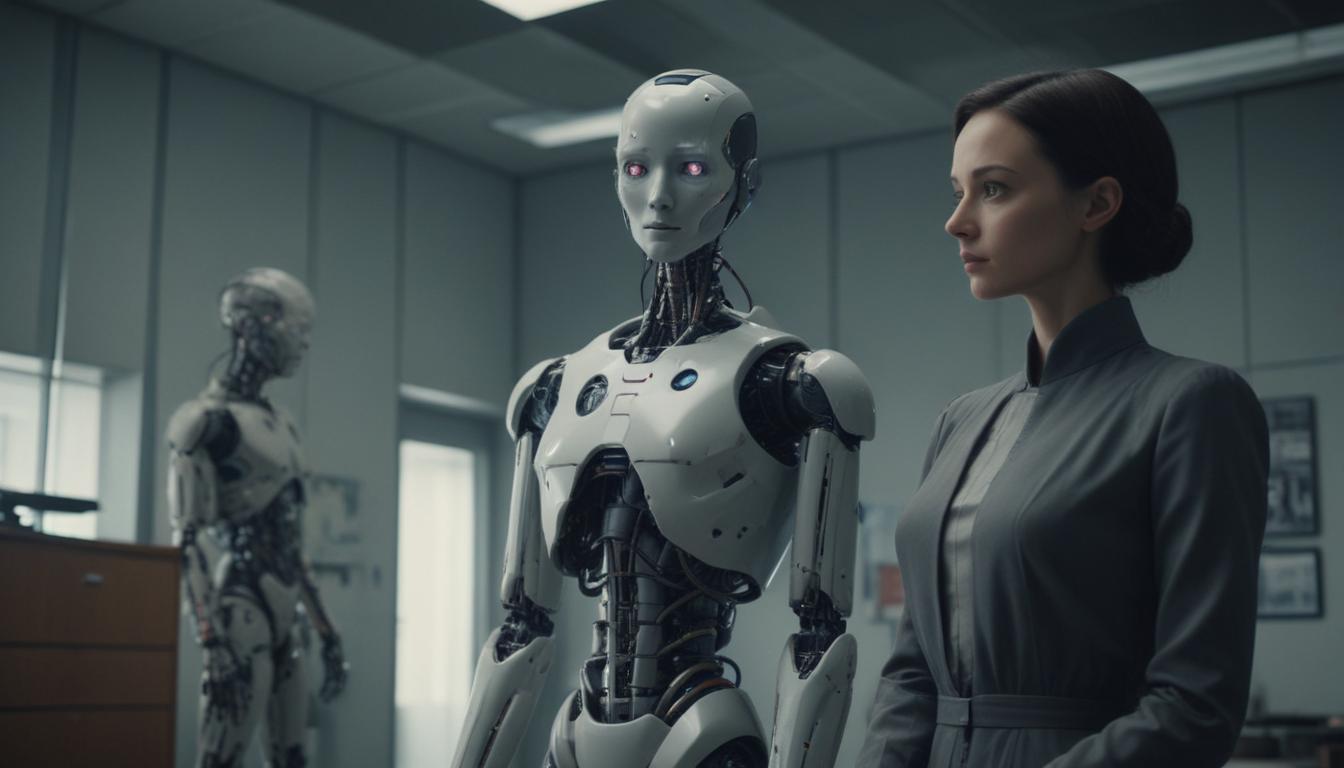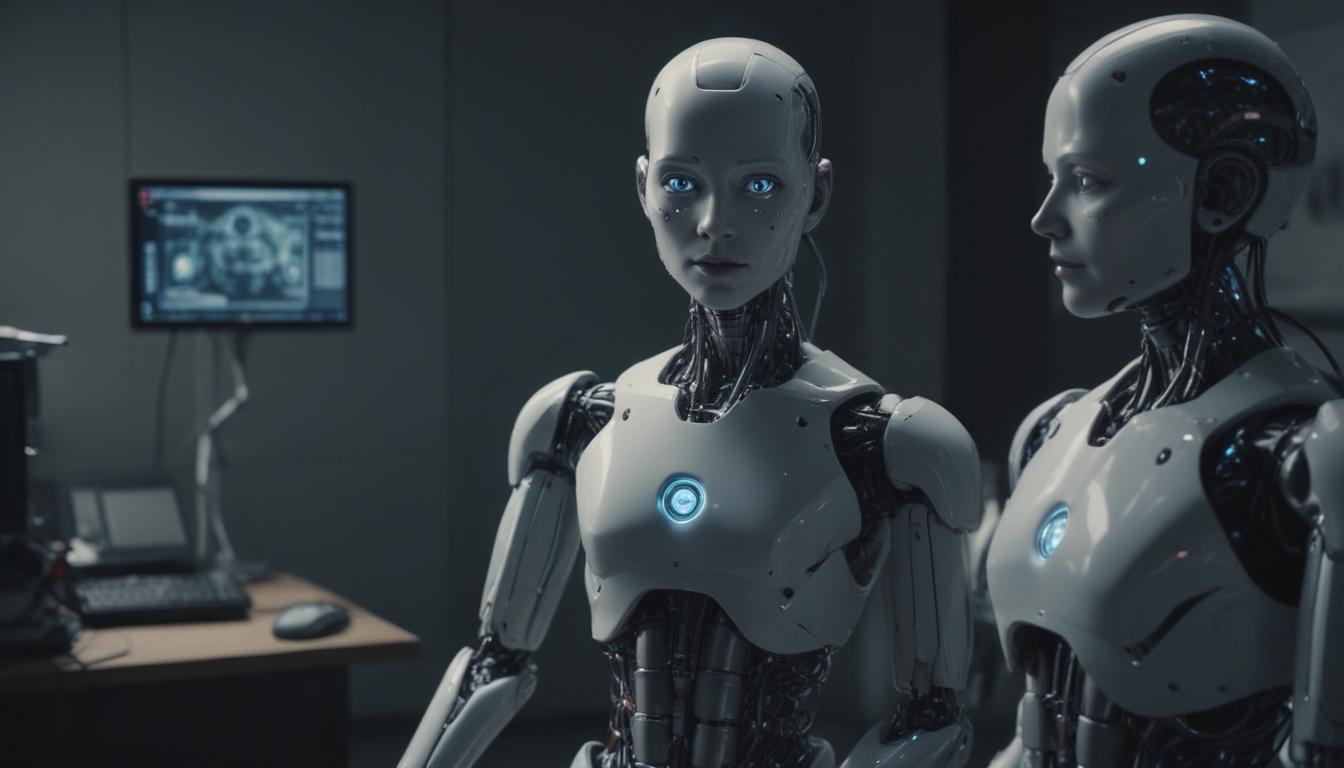Now Reading: Decoding AI’s Moral Code
- 01
Decoding AI’s Moral Code
Decoding AI’s Moral Code

The Ethics of AI Navigating Moral Dilemmas in Technology
Artificial intelligence is no longer science fiction. It powers the search engines we use, the shows we stream, the cars we drive, and the medical tools that save lives. This rapid integration into the fabric of our society is both exciting and deeply unsettling. With every new breakthrough, a growing sense of unease emerges, fueled by headlines about biased algorithms, job automation, and the potential for autonomous systems to make life-or-death decisions. You may feel overwhelmed, wondering how to grasp the complex moral questions that AI presents. How can we ensure fairness? Who is accountable when an AI system fails?
This article is your guide through that confusion. We will demystify the field of AI ethics, breaking down the most pressing moral dilemmas into clear, understandable concepts. Instead of getting lost in technical jargon or dystopian fantasies, we will explore the real-world challenges we face today and the practical steps we can take to build a more responsible future. This is your starting point for navigating the moral maze of artificial intelligence and becoming an informed voice in one of the most important conversations of our time.
Understanding the Core Ethical Challenges in AI
At its heart, the study of AI ethics is about embedding human values into non-human systems. It forces us to confront difficult questions of accountability, transparency, and control. When a self-driving car is involved in an accident, who is at fault—the owner, the manufacturer, or the programmer who wrote the code? This question of accountability is a central pillar of AI ethics, as the traditional lines of responsibility become blurred when decisions are made by an algorithm.
Furthermore, we face the challenge of transparency, often referred to as the “black box” problem. Many advanced AI systems, particularly deep learning models, arrive at conclusions through processes so complex that even their own creators cannot fully explain them. This lack of transparency is deeply problematic, especially when these systems are used to make critical judgments about people’s lives, such as approving a loan, diagnosing a disease, or recommending a prison sentence. Without understanding the “why” behind an AI’s decision, we cannot effectively check it for errors, challenge its conclusions, or ensure it is operating fairly.

The Specter of Bias and Fairness
Perhaps the most immediate and damaging ethical issue in AI today is algorithmic bias. An AI system is only as good as the data it is trained on. Because these systems learn by identifying patterns in vast datasets, they inevitably absorb and often amplify the historical biases present in that data. If an AI is trained on decades of hiring data that reflects a societal bias against women in leadership roles, it will learn to favor male candidates, entrenching past injustices under a veneer of technological neutrality.
This isn’t a theoretical problem; it has profound real-world consequences. We have seen facial recognition systems that are less accurate for women and people of color, leading to wrongful arrests. We have seen risk-assessment tools used in the justice system that unfairly penalize individuals from minority communities. The great danger is that these biased systems appear objective, making it even harder to challenge their discriminatory outcomes. Ensuring fairness requires a conscious and constant effort to audit our data, test our models, and correct for the biases we know exist in our world.
How Bias Creeps into Algorithms
Bias can enter an AI system at multiple stages, but it most often begins with the data. If a dataset used to train a medical AI predominantly features data from one demographic, its diagnostic capabilities may be significantly less accurate for others. This is a problem of representation; the data simply does not reflect the diversity of the real world. This is not malicious, but the result is a system that is not equitable in its performance.
Beyond the data itself, bias can be introduced by the very people who design the algorithms. The choices engineers make about what data to include, what variables to prioritize, and what “success” looks like for the AI can all be influenced by their own unconscious assumptions. A team lacking in diversity is more likely to overlook potential biases that would be more apparent to individuals with different life experiences. This highlights that solving algorithmic bias is not just a technical challenge but a human one, requiring diverse teams and a deep commitment to ethical oversight throughout the entire development process.
Forging a Path Forward A Call for Responsible AI
Confronting these ethical dilemmas can feel daunting, but they are not insurmountable. The path forward lies in a global commitment to responsible AI development and deployment. This approach moves beyond simply identifying problems and focuses on proactively building ethical considerations into the technology from the ground up. It means treating ethics not as a final compliance checkbox but as a core component of the design and engineering process.
This effort cannot be shouldered by tech companies alone. It requires a broad, multi-stakeholder collaboration between developers, ethicists, social scientists, policymakers, and the public. We need open conversations about our societal values and how we want them reflected in our technology. By fostering a culture of responsibility, we can steer the development of AI away from potential pitfalls and toward a future where it serves the common good, augmenting human potential and helping us solve some of the world’s most complex problems.
The Role of Regulation and Human Oversight
Meaningful progress requires a combination of self-regulation and smart government policy. Just as we have regulations for food safety and vehicle manufacturing, we need a clear framework for high-stakes AI systems. Policies like Europe’s GDPR have already set a precedent for data privacy, and similar regulations are needed to demand transparency, explainability, and fairness in algorithmic decision-making. Clear rules create a level playing field and ensure that a baseline of ethical practice is upheld across the industry.
Ultimately, the most powerful safeguard is meaningful human oversight. For critical decisions that carry significant consequences, AI should be a tool to assist, not replace, human judgment. This “human-in-the-loop” model ensures that there is always a person who can review, override, and take ultimate responsibility for a decision. We must resist the temptation to fully automate complex social and ethical judgments. By keeping humans at the center of the process, we can harness the incredible power of AI while ensuring that our technology remains firmly in service of our humanity.



































